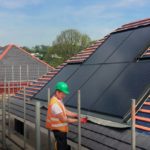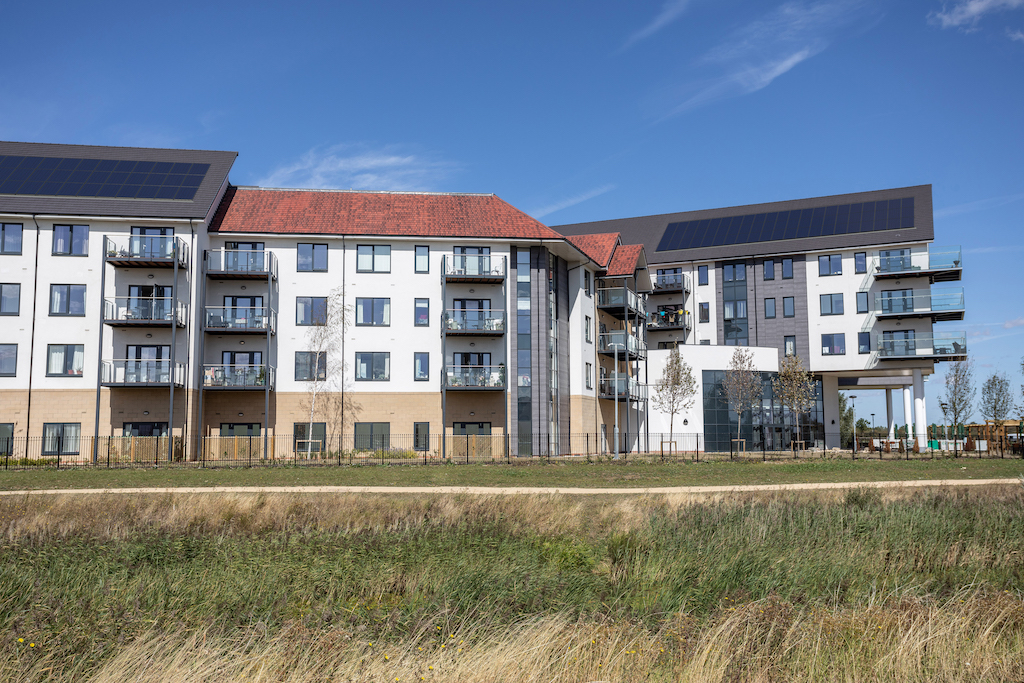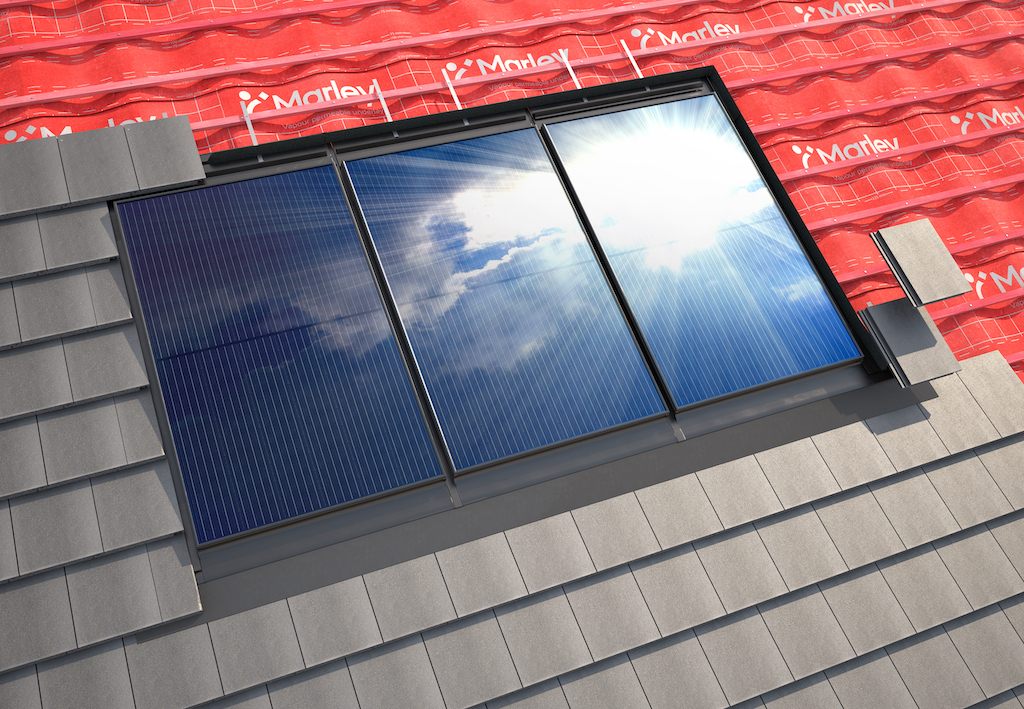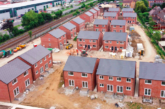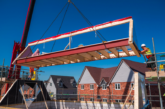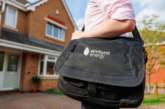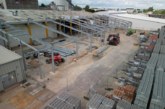A combination of escalating energy prices, new home-based working models, and concerns for the future of the environment, is set to increase consumer pressure on housebuilders to deliver energy efficient, multi-use, and sustainable housing solutions. Stuart Nicholson, Roof Systems Director at Marley, outlines how a strategic look at the role of the roof can help the sector create homes built with the future in mind.
The nation’s housing stock is viewed by policy makers as an important component of the long-term aim to deliver a low carbon future. COP26 outlined the perils of the impending climate crisis and government moves, such as the changes outlined in Part L of the Building Regulations, are designed to ensure we start building more energy efficient, low carbon, sustainable homes. As an interim measure before the full force of the Future Homes Standard becomes a reality in three years’ time, the immediate objective is to direct the construction of new homes, so they produce 31% lower carbon emissions.
According to the Climate Change Committee, the built environment accounts for around 40% of UK greenhouse gas emissions, with approximately 14% of this coming from the 28 million homes in the UK. This puts the future construction of sustainable new homes front and centre in the fight to create a low carbon future.
But there are also other important factors influencing consumer behaviour and driving emerging trends when it comes to the housebuilding sector. These include the current energy crisis and a shift in how and where people connect with the world of work.
From an immediate perspective, the unprecedented surge in worldwide energy prices is translating into real concerns for homeowners.
The experience of the pandemic is also altering traditional working practices with many employers looking to adopt hybrid models that allow for a mixture of home and office working. As a result, more people are spending increasing amounts of time in their own properties and, as such, many will be reassessing their relationship with home spaces and how they use them.
Housebuilders will need to carefully consider how they respond to what is a changing consumer landscape fuelled by energy economics and radical changes to working patterns. Fully aware that future buyers will have energy efficiency and working from home as key priorities, the sector needs to pivot to ensure such considerations are met, and the functionality of future housing stock continues to match consumer expectations.
But housebuilders who take a strategic view on the positive contribution roofing can make towards the delivery of sustainability-linked construction solutions, can assist in the long-term objective of matching housebuilding strategies with both changing consumer lifestyles and government low carbon policies and regulation.
Solar PV
The improvements in new home energy efficiency being demanded by policy makers cannot simply be delivered by enhancing building fabric alone. Instead, it is expected the route favoured by housebuilders will see the specification of solar PV, with an efficient gas boiler, or a heat pump, to achieve the required levels stipulated by the forthcoming Part L changes.
For housebuilders, solar PV on the roofscape – combined with an efficient gas boiler – appears to be the quickest, and, more importantly, most cost-effective way for the sector to meet the immediate Part L carbon reduction obligations.
The latest and fully integrated solar PV roof systems clearly offer a more visually appealing, cost efficient and easy to install option. The integration benefits mean solar panels can simply replace a section of existing roof tiles to create a sleek aesthetic and deliver a seamless solution as part of the overall roof.
Solar PV technology is tried and tested, readily available and has become much more affordable in recent times, making it a highly attractive solution for housebuilders. Indeed, Solar Energy UK predicts that the modification to Part L could lead to a five-fold increase in the number of new homes built with solar technology as part of long-term sustainable construction strategies.
Roofing design
As part of overall roof design planning and implementation on new build sites, optimising the energy generation cost efficiencies that solar provides can be achieved by considering some additional and important factors.
Housing developments that use solar PV solutions should focus on capturing as much sun as possible to maximise the benefit for low carbon and low-cost energy generation. This translates into ensuring properties have south facing roofscapes and the avoidance, if possible, of shadows emanating from surrounding trees, buildings, and other means nearby.
In addition, new property design should look to incorporate larger scale roof spaces so increased solar panel volumes can be integrated to deliver optimum low-cost energy generation benefit. The seamless installation of solar PV as part of an integrated full roofing solution not only guarantees access to cheap energy, but it also provides a stylish finish that negates prevailing concerns about the bulky, bolt-on solar PV systems that have dominated the market in the past.
Finally, housebuilders can take commercial advantage of the surge in consumer interest for low carbon and sustainable answers that will benefit the planet, using them as a point of differentiation for potential home buyers.
The specification of low carbon heat sources such as heat pumps, alongside solar PV, offers a powerful combination and a great way to sustainably keep energy bills down for homeowners. And with the news that more electric cars were registered in 2021 than in the previous five years, it is also clear the rapid acceleration in consumer take-up of electric vehicles will translate into fresh demands home buyers. They will expect to see a home charging infrastructure in place when they purchase their new build properties.
Housebuilders can differentiate themselves by providing sustainable product solutions such as integrated solar PV, inverters, battery storage, heat pumps, and EV charging points, all of which will aid reduced cost energy generation, deliver low carbon heat and at home EV charging facilities.
This will not only help the sector to meet its short and long-term obligations under Part L and the Future Homes Standard, but housebuilders who place sustainability at the heart of their construction offer will delight discerning would-be buyers who are now prioritising greener solutions across many aspects of their lives and especially in their home.

